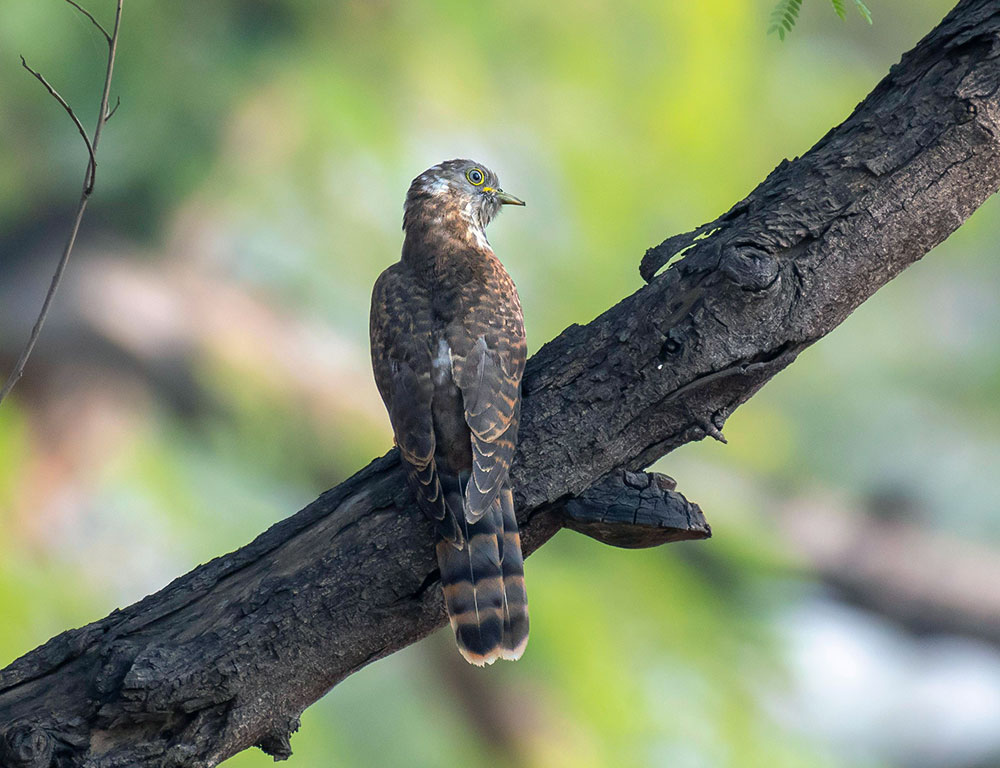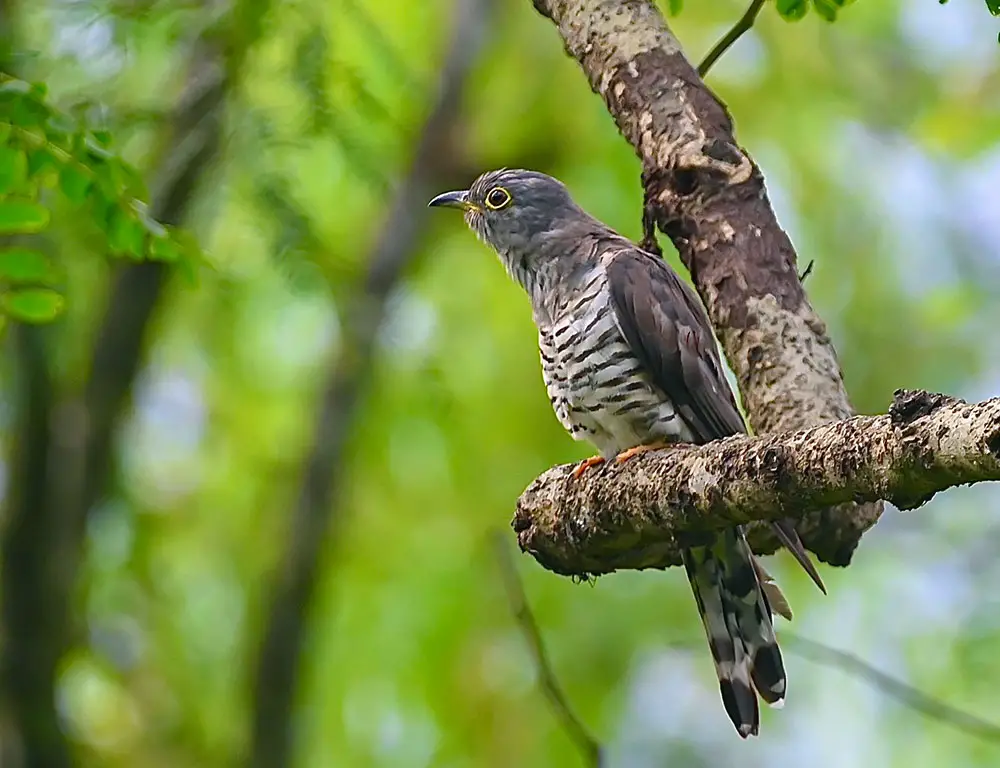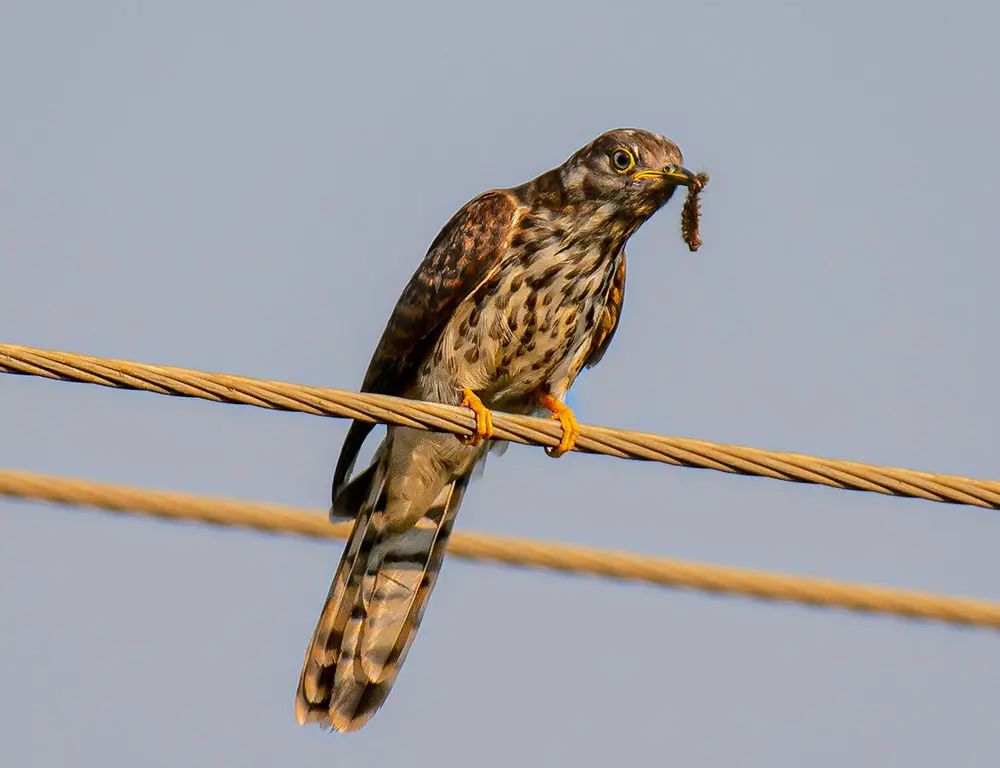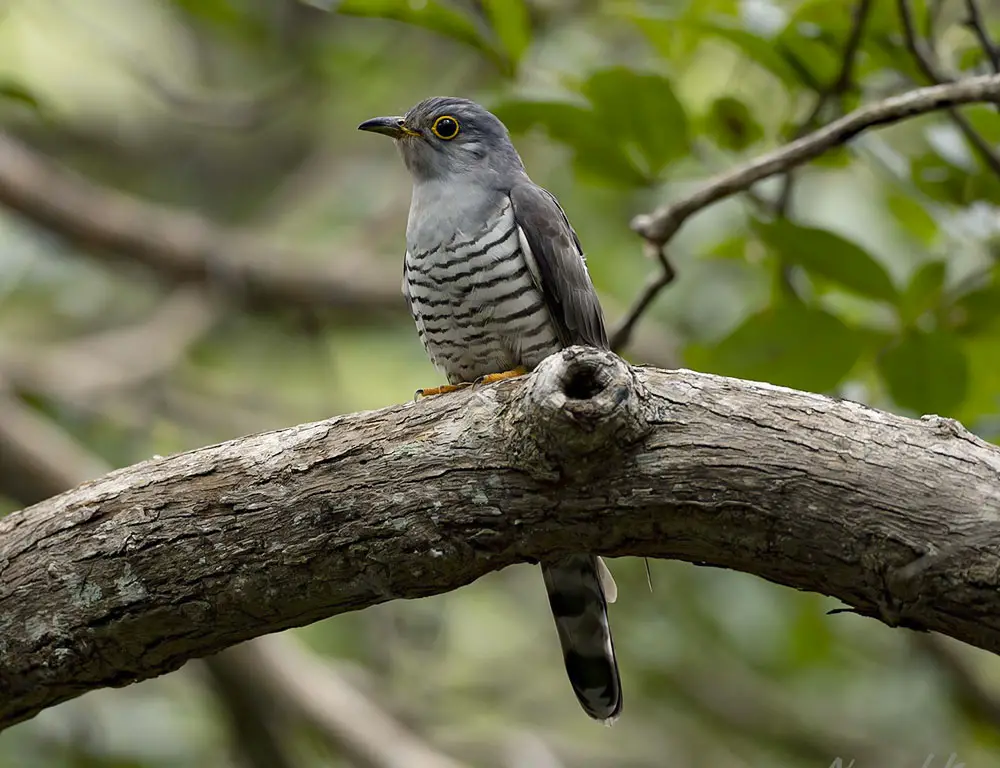The Indian Cuckoo, a captivating member of the avian world native to Asia, has recently sparked my fascination with its distinct characteristics.
Renowned for its melodious song that resonates through lush forests, this bird possesses unique traits that set it apart.
Among these is its practice of brood parasitism, a behavior shared with its cuckoo relatives, where it deceives other birds into raising its young.
Moreover, the Indian Cuckoo’s remarkable migratory journey from southern Asia to Siberia for breeding showcases its endurance and adaptability.
Ornithologists worldwide are intrigued by this annual migration, making the Indian Cuckoo a compelling subject of study.
Physical Characteristics of Indian Cuckoo

The Indian Cuckoo, known for its musical call, possesses several distinct physical characteristics:
Size and Coloration
Indian Cuckoos are medium-sized birds, typically measuring around 33 centimeters in length. They exhibit a predominantly greyish plumage, contrasting white belly, and barred undertail feathers.
This coloration provides them with effective camouflage amidst the foliage of their habitat.
Sexual Dimorphism
Unlike other bird species, Indian Cuckoos display minimal sexual dimorphism, with males and females sporting similar plumage patterns.
Wings and Flight
Their wings are long and pointed, perfectly adapted for swift and agile flight through dense foliage. This feature enables them to navigate their forest habitats with ease.
Legs
Despite possessing solid legs, Indian Cuckoos are not known for their walking or running abilities. Instead, their powerful limbs primarily facilitate perching and takeoff during flight.
Eye Coloration
One of the most striking features of the Indian Cuckoo is its mesmerizing eyes. They are dark in color and encircled by bright yellow rings, creating a captivating gaze against the bird’s ash-grey feathers.
Beak Structure
The beak of the Indian Cuckoo is slightly curved downwards and ends at a sharp point. This specialized structure aids them in capturing insects mid-flight, their primary food source. Typically black with a subtle tint of green, the beak adds to the bird’s unique charm.
Here’s a breakdown of their average dimensions:
| Average Length | Wing Length | Tail Length |
|---|---|---|
| 33 cm | 15-16 cm | 13-14 cm |
Habitat and Distribution

The Indian Cuckoo is a remarkable bird species with fascinating habitat preferences and extensive distribution.
Habitat
Indian Cuckoos are commonly found in forests and woodland areas. They show versatility in their habitat selection, ranging from sea-level areas to heights up to 1,500 meters.
They prefer open country with scattered trees and bushes, indicating a preference for spaces with a mix of vegetation types.
Distribution
Indian Cuckoos are widely spread across Asia, with their primary habitat being in India. However, they can also be found in various regions of China, Indonesia, and Russia.
Here’s a breakdown of their distribution:
- India: Widely distributed across many states, indicating their adaptability to diverse ecosystems.
- China: Mostly spotted in southern provinces, suggesting a preference for warmer climates.
- Indonesia: Found during the winter migration period, indicating their migratory behavior and movement to warmer regions.
- Russia: Predominantly seen in the Siberia region, possibly indicating breeding grounds or stopover points during migration.
Migration
The Indian Cuckoo is a migratory bird, particularly during the winter months. They migrate southwards to warmer parts of Southeast Asia, such as Indonesia, demonstrating their ability to adapt to changing environmental conditions.
Behavior and Diet of the Indian Cuckoo

The Indian Cuckoo (Cuculus micropterus) is a fascinating bird with unique behavior and dietary habits. Let’s summarize the key points:
Behavior
- Solitary Nature: Indian Cuckoos are predominantly solitary birds, though they may form smaller groups or pairs.
- Crepuscular Activity: They are most active during twilight hours at dawn and dusk.
- Brood Parasitism: Indian Cuckoos exhibit brood parasitism, laying their eggs in the nests of other bird species. They choose nests with hosts that lay eggs similar in color.
- Migratory: These cuckoos breed in South Asia and migrate southwards towards Indonesia and Australia for wintering, demonstrating remarkable adaptability.
- Communication: Their communication involves intricate calls, which vary subtly based on factors like mating season or territorial claims.
Diet
- Insects: Indian Cuckoos feed on insects such as caterpillars and beetles.
- Fruits: They consume berries as part of their diet.
- Seeds: Various plant seeds are also part of their diet.
- Occasionally: Indian Cuckoos may also consume small reptiles and amphibians.
Importance and Conservation of Indian Cuckoo

The Indian Cuckoo holds significant ecological and cultural importance but faces threats to its survival, prompting conservation efforts to protect this species:
Significance
- Ecological Role: As an insectivore, the Indian Cuckoo helps control insect populations, maintains environmental balance, and prevents potential pest outbreaks.
- Cultural Importance: In many local traditions and folklore across India, the call of the Indian Cuckoo is considered auspicious, symbolizing good fortune or impending change. This cultural significance underscores its importance in societal narratives.
Threats
- Habitat Loss: Deforestation and urbanization have led to the loss and fragmentation of the Indian Cuckoo’s natural habitat, reducing available nesting and foraging areas.
- Pesticide Usage: The use of pesticides in agriculture poses a significant threat to Indian Cuckoos by reducing their food availability and potentially impacting their health.
Conservation Efforts
- Legal Protection: The Indian Cuckoo is classified under Schedule IV of The Wildlife Protection Act 1972 in India, providing legal protection against hunting and trade.
- Protected Areas: Conservation efforts include establishing and managing protected areas such as national parks to preserve and restore critical habitats for the Indian Cuckoo.
- Awareness Programs: Education and awareness initiatives aim to engage local communities in adopting sustainable practices that mitigate threats to the Indian Cuckoo and its habitat.
Conclusion
The Indian Cuckoo emerges as a remarkable bird, captivating us with its distinctive calls echoing through Asian woodlands. While not currently endangered, their existence faces threats from habitat loss and illegal activities.
Understanding their significance in biodiversity and cultural heritage is paramount for their conservation. Our exploration uncovered fascinating aspects of their behavior, diet, and reproductive strategies, highlighting their intricate role in ecosystems.
Despite being one of the most miniature studied birds due to their secretive nature, their importance cannot be overstated. As we wrap up, let’s cherish and respect these avian wonders, recognizing their invaluable contributions to our world.
The Indian Cuckoo’s call is not merely a sound but a narrative, reminding us of the wonders of nature and the stories waiting to be discovered.